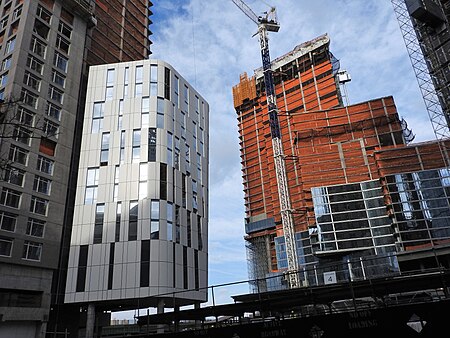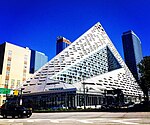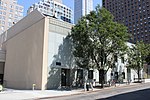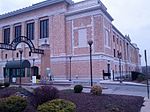Waterline Square
Condominiums and housing cooperatives in ManhattanKohn Pedersen Fox buildingsMulti-building developments in New York CityRafael Viñoly buildingsResidential buildings in Manhattan ... and 3 more
Residential skyscrapers in ManhattanRichard Meier buildingsUse mdy dates from August 2019

Waterline Square is a 5-acre (2.0 ha), $2.3 billion luxury condominium and rental development located near the Hudson River on the Upper West Side of New York City. The complex will include three residential towers with 1,132 units and 3 acres (1.2 ha) of park, along with 100,000 square feet (9,300 m2) of amenity space. The residences range in size from one to five bedrooms.The project, which features designs by Rafael Viñoly, Kohn Pedersen Fox, and Richard Meier, is scheduled to be completed in 2019.
Excerpt from the Wikipedia article Waterline Square (License: CC BY-SA 3.0, Authors, Images).Waterline Square
West 61st Street, New York Manhattan
Geographical coordinates (GPS) Address Website Nearby Places Show on map
Geographical coordinates (GPS)
| Latitude | Longitude |
|---|---|
| N 40.773 ° | E -73.9914 ° |
Address
Two Waterline Square
West 61st Street 400
10023 New York, Manhattan
New York, United States
Open on Google Maps





